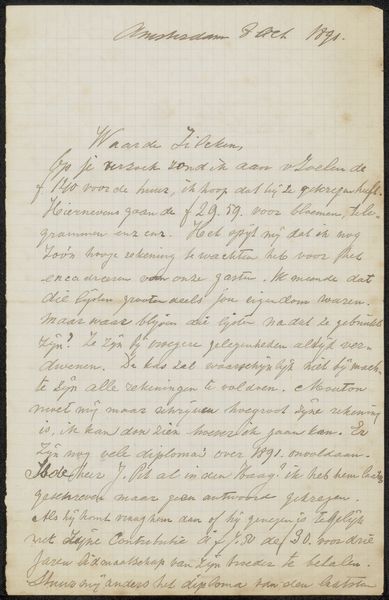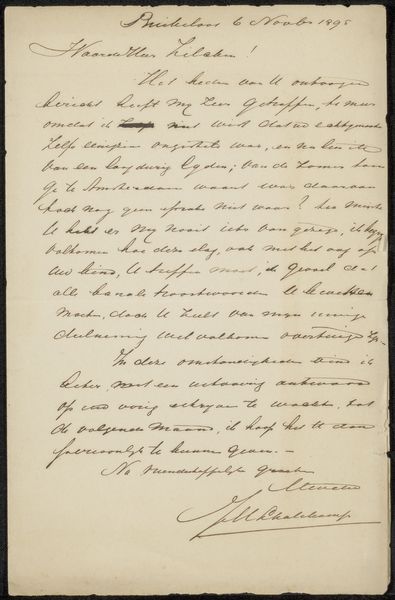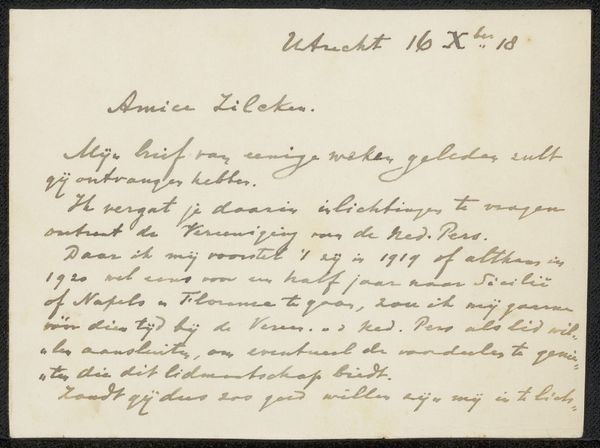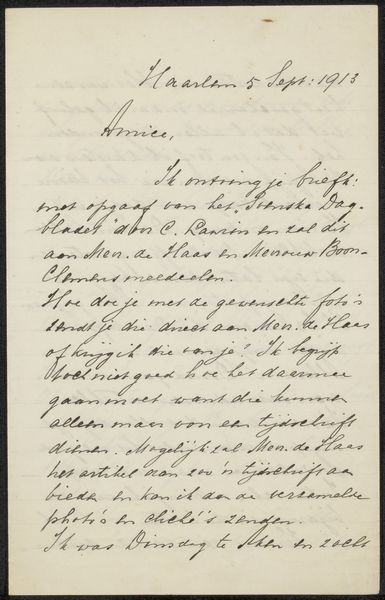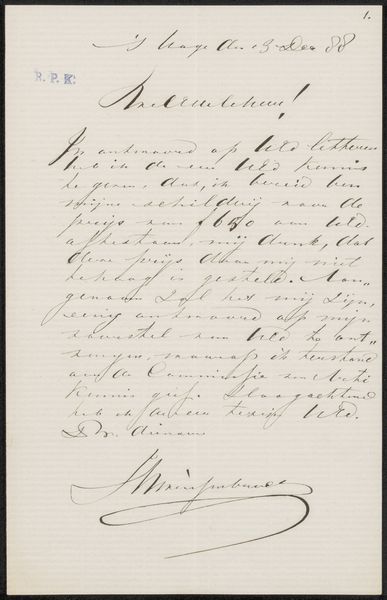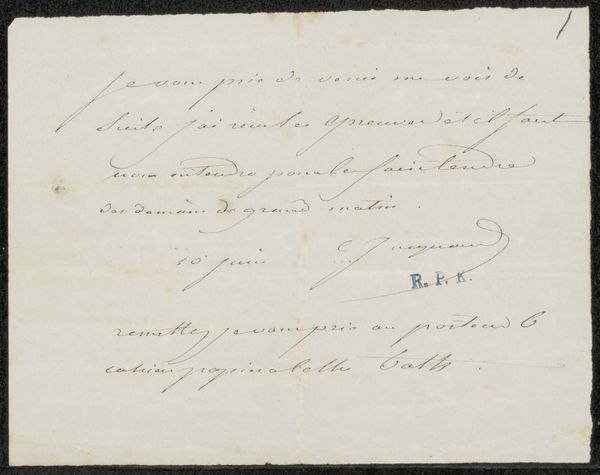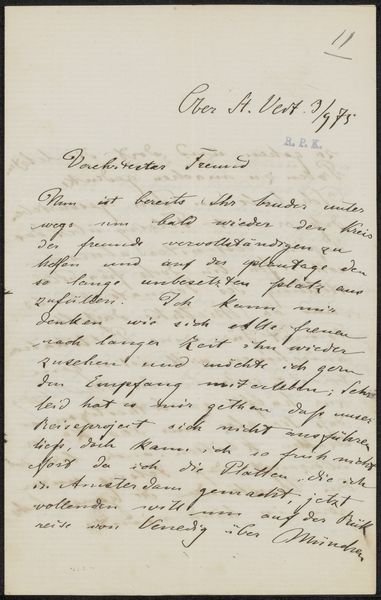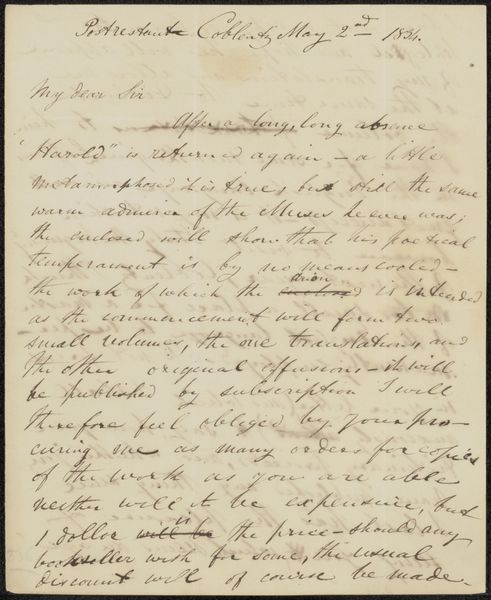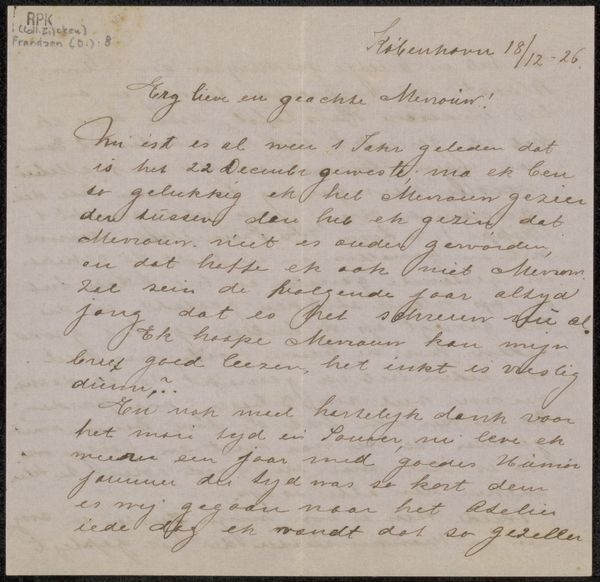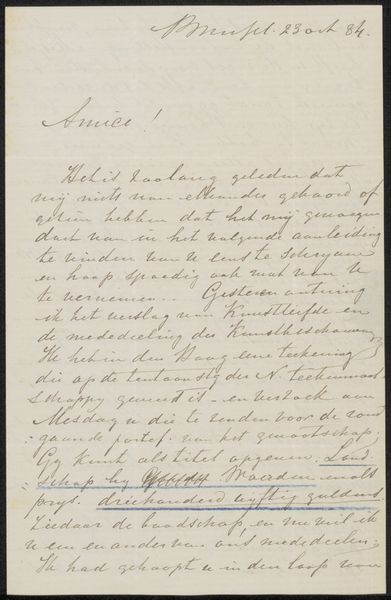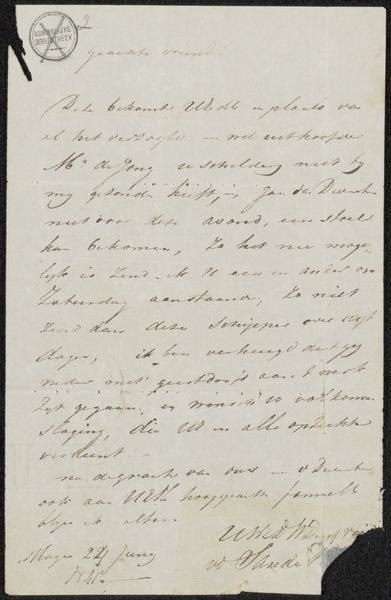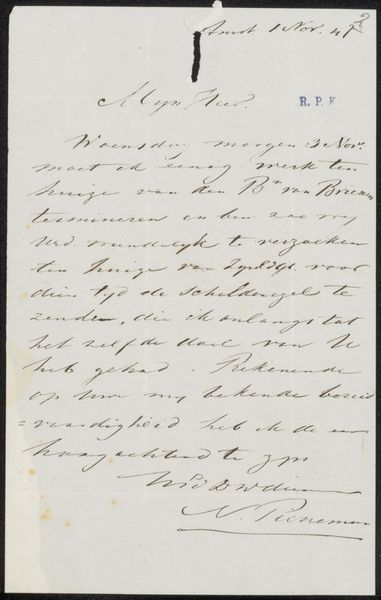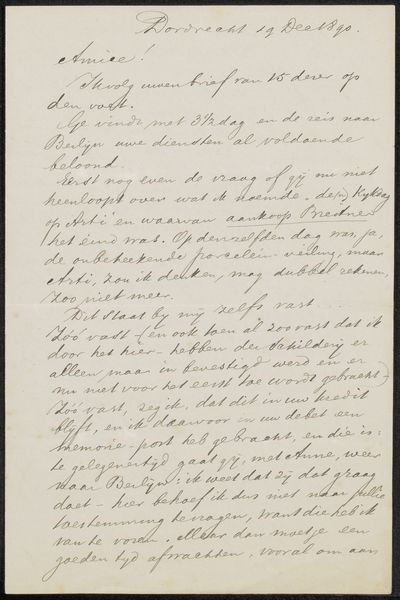
drawing, paper, ink
#
portrait
#
drawing
#
paper
#
ink
Copyright: Rijks Museum: Open Domain
Editor: So, here we have "Brief aan Philip Zilcken en Henriette Wilhelmina van Baak," likely from 1926, created with ink on paper. Looking at this letter, I am struck by its intimacy; it feels like a little window into another world, somehow very fragile. What catches your eye? Curator: The visual symbolism of the handwritten word holds immense power. Calligraphy, the very script, carries emotional weight. See how the letterforms lean, how the ink pools and fades? The writing seems both confident and vulnerable, a reflection of the author's state of mind. What continuities do you perceive between script as visual communication and drawing as self-expression? Editor: That's fascinating! I never really considered the script as more than just words. I see how it could be expressive. The date makes me wonder what life was like for the artist in 1926. Curator: Indeed. Context enriches the artifact, in turn lending artifacts deeper resonances within the cultural consciousness. In 1926, Europe was still grappling with the aftermath of the First World War. The letter becomes a poignant relic— what anxieties, hopes and beliefs were held within it? Editor: So, by viewing this letter through its symbols and cultural background, we get a much more profound reading than just the words themselves. It becomes a fragment of shared humanity, bridging time. Curator: Precisely. And that’s how visual forms sustain our understanding and appreciation for memory through cultural material.
Comments
No comments
Be the first to comment and join the conversation on the ultimate creative platform.
